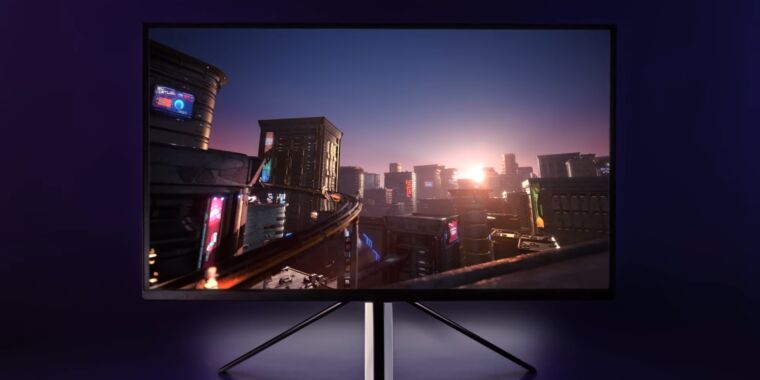
Aurich Lawson | Getty Images
When Zachary Cohn and his wife bought a house in the Northgate neighborhood of Seattle, Washington, they didn’t expect any trouble getting home Internet service. It was only after closing on the house in July 2019 that they learned the bad news. “All six neighbors I share a property line with are wired for Comcast, but our house never was,” Cohn told Ars.
Comcast had wired up the neighborhood with cable decades earlier and provides high-speed broadband to the abutting properties. But the cable TV and Internet service provider never extended a line to the house purchased by Cohn and his wife, Lauryl Zenobi.
Cohn spent many months trying to get answers from Comcast on how he and Zenobi could get Internet service. Eventually, he contacted his City Councillor’s office, which was able to get a real response from Comcast.
Comcast ultimately said it would require installing 181 feet of underground cable to connect the house and that the couple would have to pay Comcast over $27,000 to make that happen. Cohn and Zenobi did not pay the $27,000, and they’ve been relying on a 4G hotspot ever since.
“I was just flabbergasted”
“I was just flabbergasted that a house like this, in an area like this, could possibly have never been wired for Internet,” Cohn said in a phone interview. Because the house is “in the middle of Seattle, it didn’t even dawn on me that that was possible,” he said, adding that the lack of Internet service would be “more understandable if I was two miles from my nearest neighbor.”
The Seattle Kraken hockey team’s $80 million practice facility is in the same Northgate neighborhood, about a half-mile from the house. There’s a major bus station in the area, a light rail station that recently opened nearby, and an elementary school within about a 90-second walk, Cohn said, noting that the property is “well within the Seattle city limits.”
The house, built in 1964, is also about 10 miles from both T-Mobile Park, where the Seattle Mariners play, and Lumen Field, the Seattle Seahawks stadium named after CenturyLink’s Lumen brand. T-Mobile doesn’t offer its new home Internet service at the house. CenturyLink offers Internet service at Cohn’s address—but only its ancient DSL with download speeds of up to 3Mbps and upload speeds up to 500kbps. Cable and fiber just aren’t available at the house.
Not our first Comcast horror story
We’ve written about other people who bought houses without realizing there was no home Internet service, but those stories generally took place in small towns or rural areas. In some cases, Comcast’s website and customer service employees falsely told home buyers that service was available due to errors in the company’s availability database.

Zachary Cohn
Comcast availability data wasn’t a problem in this case, as Cohn said he didn’t think to check that there was a Comcast connection before closing on the Seattle house. “Honestly, I didn’t even think to look. What house in the middle of Seattle wouldn’t be wired for reasonable Internet?” Cohn said.
Cohn contacted Ars after reading one of our previous Comcast horror stories, hoping to get the word out to others that an Internet connection is no guarantee even in densely populated cities—and even when all your neighbors have service.
Government broadband programs generally focus on “connecting neighborhoods in particular underserved communities, which I think is great,” Cohn said. But he wants people to know “there are large swaths of people, both in large geographic areas and in small individual cases, that just never got connected to high-speed Internet, and how difficult it is to go through life without that sort of connection.”
While Cohn’s situation is unusual because all the surrounding houses have broadband, he’s far from the only urban dweller without modern service. It’s particularly a problem in lower-income areas where ISPs have chosen not to upgrade old telephone lines.
Comcast junction box across the street
With the properties abutting Cohn’s, there are overhead power lines that Comcast used to extend cable to the houses. But “our power is underground and so… there are no poles to ride off,” Cohn said.
The block is shaped like a triangle, Cohn said, adding, “We’re the only house on our side of the triangle, and the other two sides each have three houses.” On the side of the house that doesn’t face its neighbors, there is an arterial road. The nearest Comcast junction box is across that road, “so they would have to dig under the arterial to connect our house to that junction box.”
Cohn told us the sellers disclosed in documents before the sale that Internet wasn’t connected at the home, but he didn’t realize it wouldn’t be possible to get service at all. After the failed attempts to get service, “we had our agent reach out to the sellers to figure out what actually is going on here,” Cohn said.
They learned that the previous homeowners struck a deal with a neighbor who ran a cable “from his Comcast hookup, across his property, across our property, and then into this house,” Cohn said. The previous owners were renting out the house, and “they sort of made this last-minute deal with the neighbor to appease the renters,” Cohn said.
But “when we talked to [the neighbor], he made it very clear that he was pretty unhappy with that arrangement in the past,” Cohn said. “I basically convinced our neighbor to continue that arrangement until we could come up with some alternative.”








